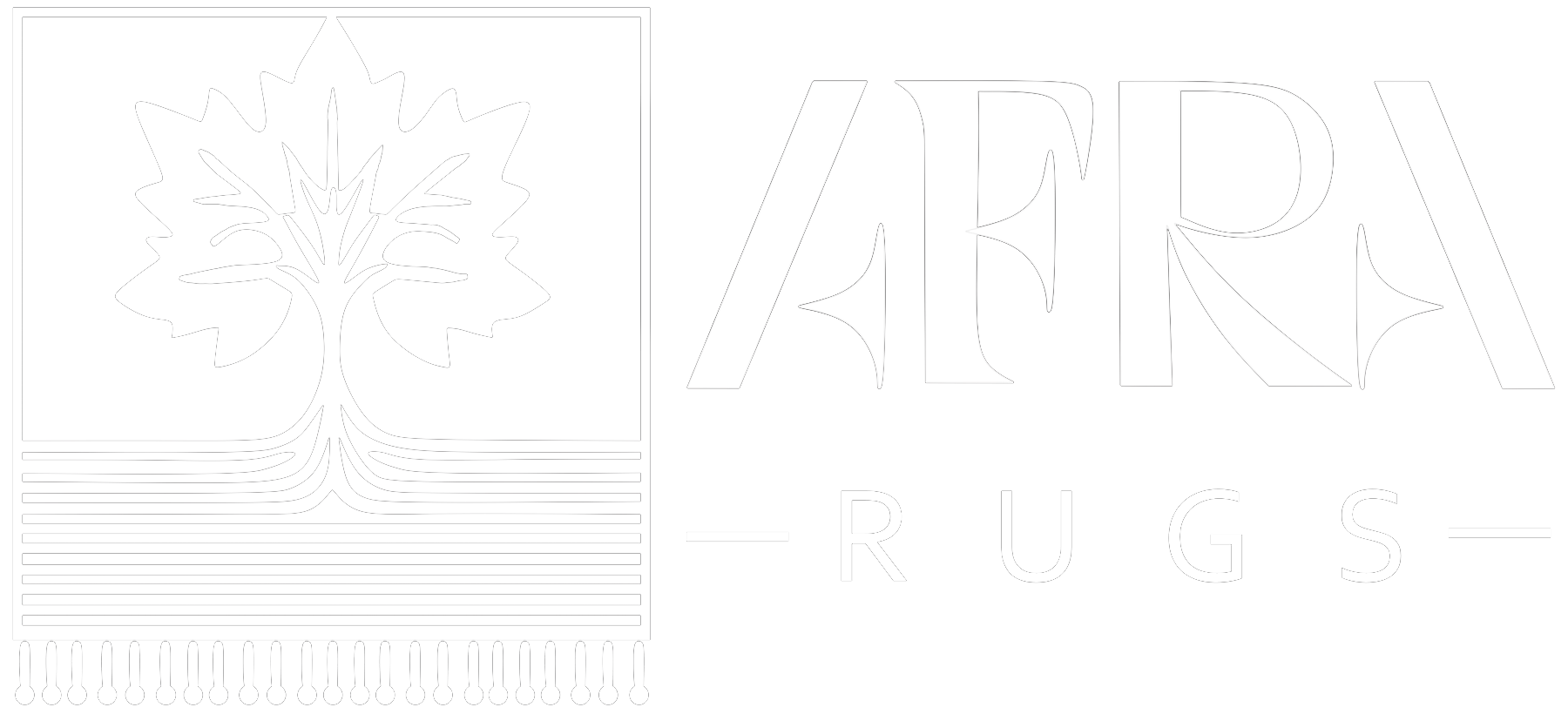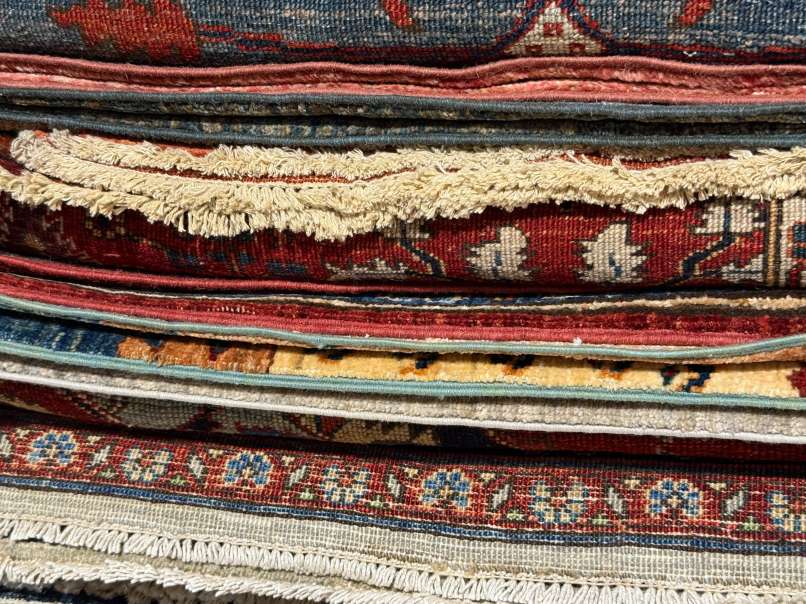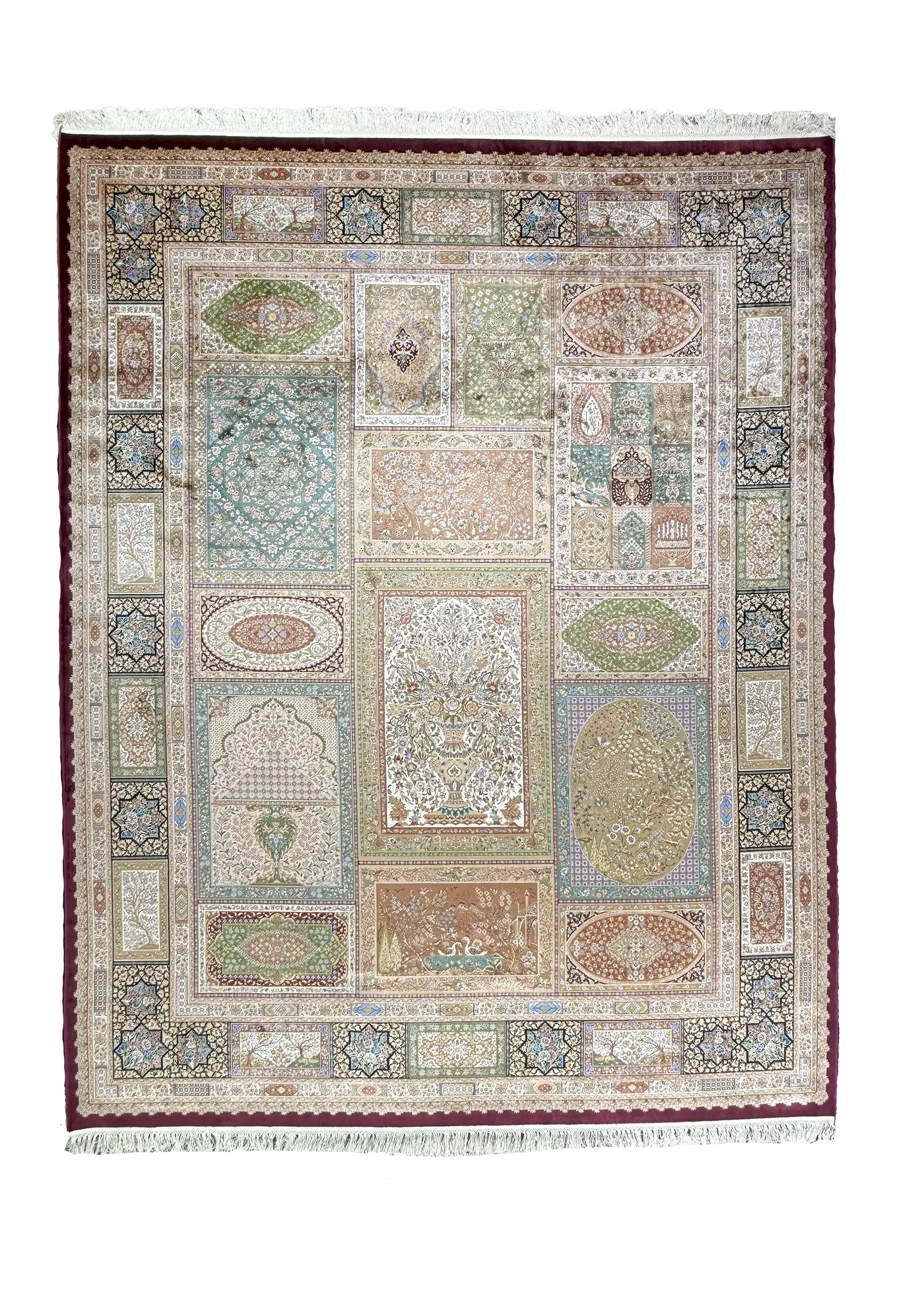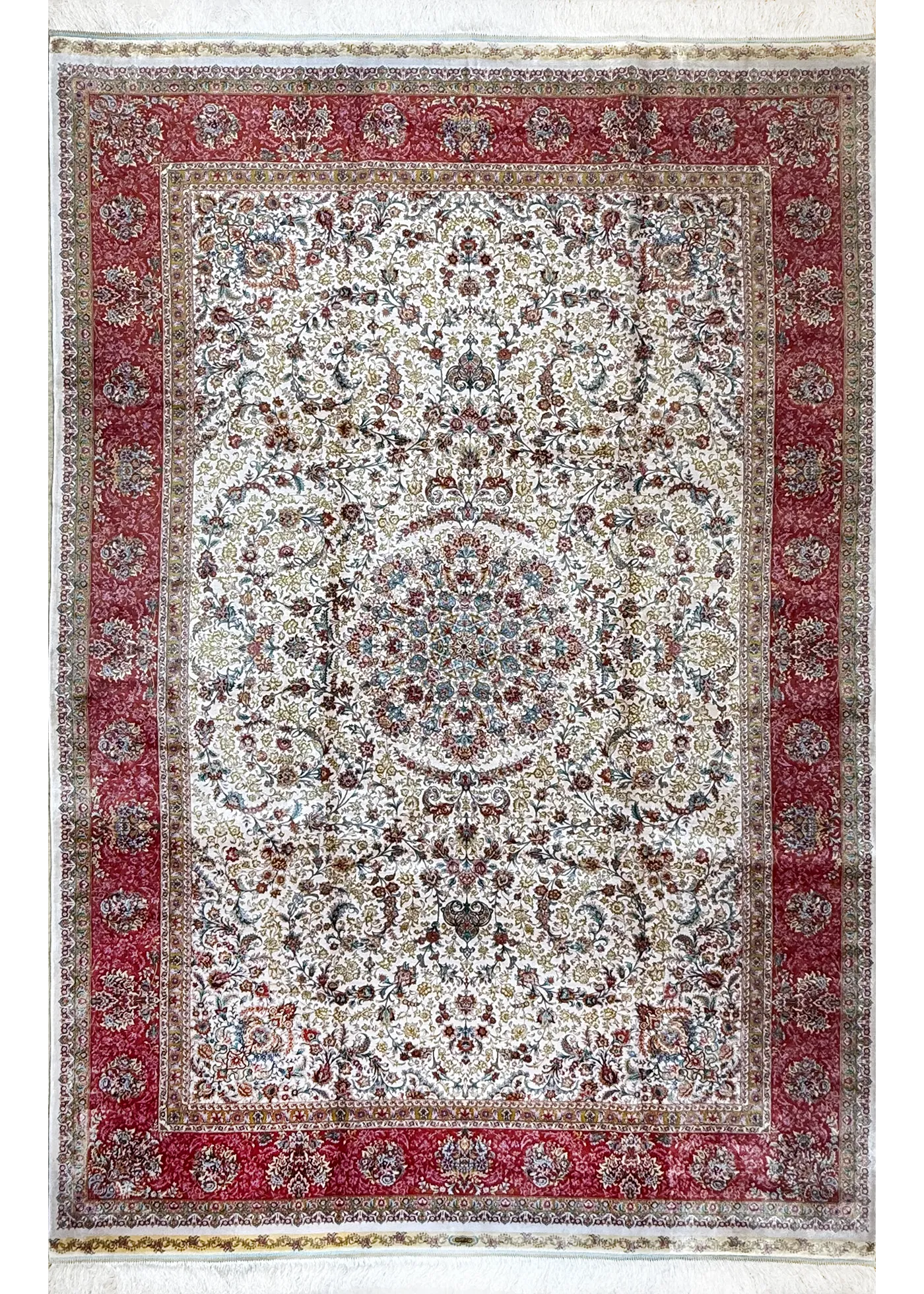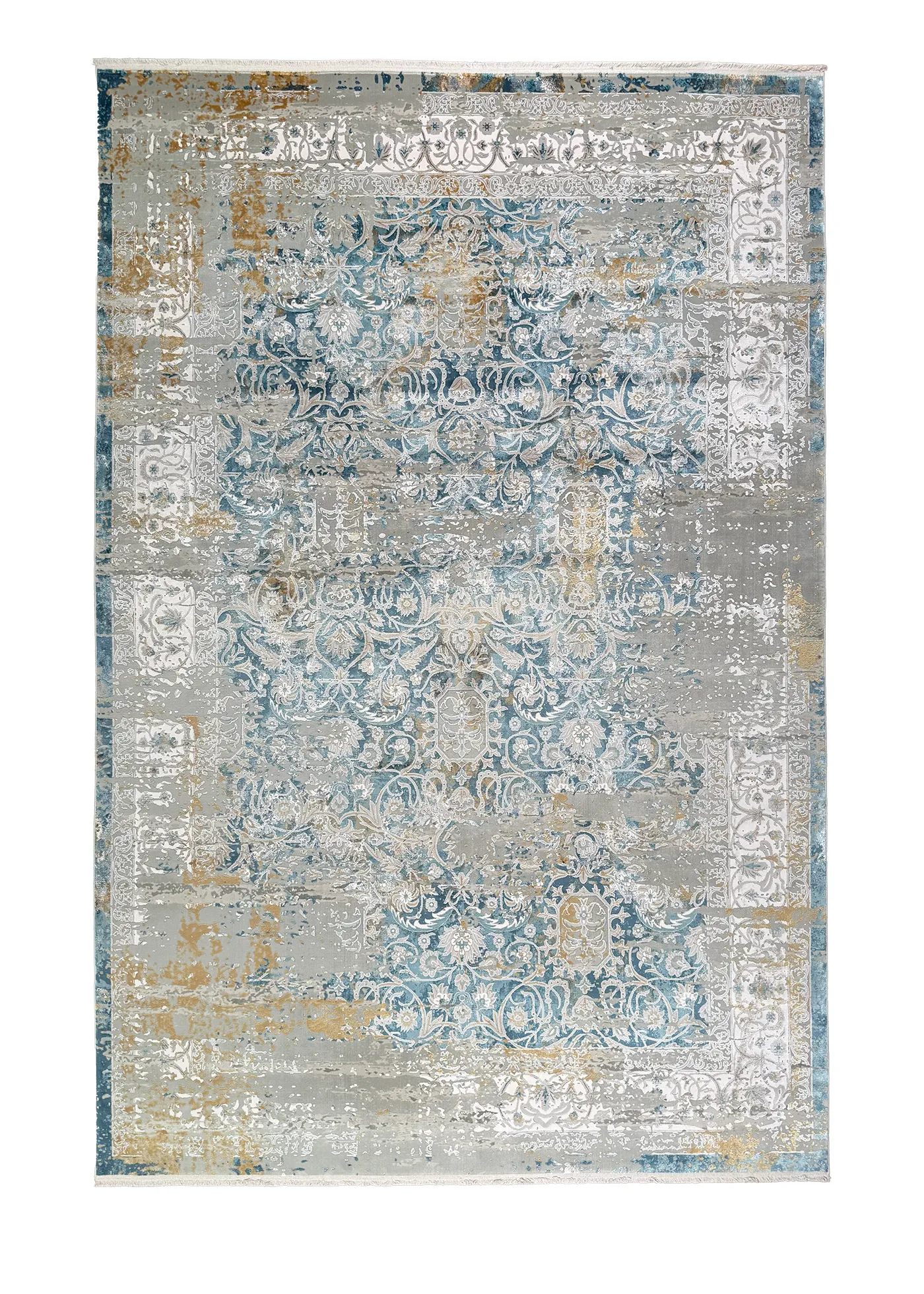How to Identify Authentic Persian Rugs: Buyer’s Checklist
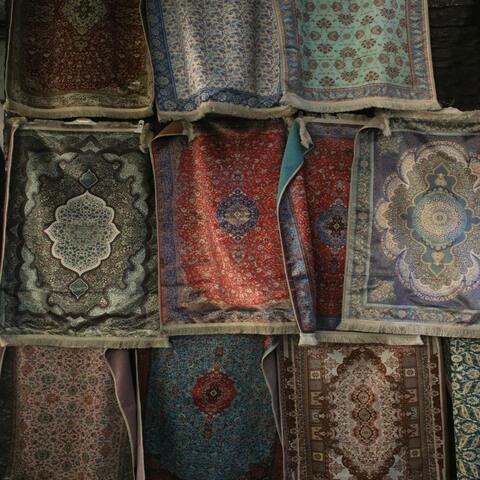
- 1 Green Silk Persian Rug Tile 8 x 10
- 2 The Allure of Authentic Persian Rugs
- 3 Hallmarks of Authentic Persian Rugs
- 4 Understanding Persian Rug Materials and Weaving Techniques
- 5 Tips for Choosing the Right Authentic Persian Rug for Your Space
- 6 The Buyer’s Checklist — How to Spot a Genuine Piece
- 7 Modern Alternatives Inspired by Tradition
- 8 Caring for Authentic Persian Rugs
- 9 Caring for Authentic Persian Rugs
- 10 FAQ: Understanding Persian Rug Authenticity
- 11 Conclusion: The Art of Choosing with Confidence
Discover how to identify authentic Persian rugs with this buyer’s checklist. Learn about craftsmanship, design, and Persian rug authenticity from Afra Rugs.
The Allure of Authentic Persian Rugs
Few things can change a room like a Persian rug.
Its colors and patterns tell a story that spans centuries. The soft feeling under your feet adds to this experience.
However, today many rugs are reproductions, not genuine pieces. Knowing how to spot authentic Persian rugs is an important skill.
While exploring rugs in a market or online store, you may encounter pieces that look almost identical. Skilled Persian artisans craft one of the rugs. The other is a mass-produced imitation. The difference is not only in price but also in quality, tradition, and craftsmanship.
In this guide, you will learn to identify genuine Persian rugs. You will learn the signs of genuine rugs and what to check when buying. If you appreciate classic designs inspired by Persian art, explore our Traditional Persian Rugs Collection. See how timeless beauty blends with modern craftsmanship.
Hallmarks of Authentic Persian Rugs
Recognizing an authentic piece begins with observation. Genuine Persian rugs carry distinct characteristics that reflect the artisan’s hand and the culture’s artistry.
Key Signs of Authenticity
| Feature | Authentic Persian Rugs | Common Imitations |
|---|---|---|
| Knots | Hand-knotted. Visible variations. Often asymmetrical (Persian knot). | Machine-woven. Knots are uniform. |
| Design Symmetry | Slight imperfections show human touch. | Patterns are perfectly mirrored. |
| Dyes | Made with natural, vegetable-based dyes. Colors fade gracefully. | Uses synthetic dyes. Colors stay overly bright. |
| Back of Rug | Design is visible. Texture is soft. | Stiff backing. May have mesh or glue. |
| Fringe | Part of the rug’s foundation. | Sewn or glued on. |
| Origin Mark | Often shows regional motifs or weaver signatures. | Generic design or no identifying mark. |
Authentic Features of Authentic Persian Rugs
Each authentic rug reflects its origin. For example, Kashan rugs are known for rich medallions and a refined floral layout, while Heriz rugs feature bold geometric shapes. Recognizing these distinct regional cues adds depth to your appreciation of Persian rug authenticity.
Understanding Persian Rug Materials and Weaving Techniques
Skilled artisans create Persian rugs using intricate patterns and carefully selected materials and weaving techniques. Each rug tells a story of craftsmanship, tradition, and artistry. By studying how artisans make rugs, you can identify authentic pieces and tell them apart from imitations.
1. Bamboo Silk:
Modern Persian-inspired rugs often use bamboo silk to replicate the luxurious sheen of traditional silk.
This material captures light beautifully, enhancing the details of each pattern. It provides durability and requires less maintenance than traditional silk. These qualities make it ideal for both its beauty and everyday use.
2. Knot Types:
The type of knot used in weaving greatly influences the rug’s texture, durability, and pattern precision. Authentic Persian rugs frequently use the Persian (asymmetrical) knot, which allows for more intricate designs. In contrast, symmetrical or machine-made knots usually indicate mass-produced rugs. Understanding knot types helps buyers assess the rug’s quality and authenticity.
3. Knot Density:
Knot density, measured in knots per square inch (KPSI), is a key factor in a rug’s intricacy and longevity. Higher knot density allows for more detailed motifs and smoother transitions between colors. Low-density rugs may still be beautiful but typically reflect simpler patterns and shorter lifespans. Recognizing knot density provides insight into both the craftsmanship and durability of the rug.
4. Weaving Techniques:
Different regions in Persia have distinct weaving methods that result in unique textures and patterns. For instance, rugs from Kashan often feature refined floral layouts, while Heriz rugs exhibit bold geometric designs. By learning about regional weaving styles, you can better identify authentic Persian rugs and appreciate their cultural heritage.
5. Materials Beyond Silk:
Modern Persian-inspired rugs usually use silk or bamboo silk. Traditional rugs, on the other hand, often have high-quality wool or cotton foundations. Wool provides resilience and warmth, while cotton offers stability for intricate weaving. Knowing the material composition helps in care and maintenance, ensuring your rug remains beautiful for decades.
6. Combining Techniques and Materials:
The true artistry of Persian rugs lies in the combination of high-quality materials and skilled weaving techniques.
A rug made of fine bamboo silk and dense knots highlights its intricate beauty. Its region-specific pattern reflects traditional craftsmanship.
Understanding these elements helps you make informed choices when selecting rugs. You can choose pieces that not only enhance your space but also preserve a legacy of artistry.
Tips for Choosing the Right Authentic Persian Rug for Your Space
Selecting the right Persian rug involves more than simply picking a pattern or color you like. Understanding a rug’s size, style, placement, and material is key. This knowledge helps you choose a rug that enhances both the appearance and functionality of your home. Carefully considering these factors helps you choose a rug that adds beauty, comfort, and cultural richness to your home.
1. Consider the Size:
Rug size dramatically influences both the look and feel of a room. Large rugs, such as 8×10 or 9×12, establish defined open spaces and provide a grounding effect for furniture arrangements. They also bring a sense of unity to spacious living areas.
Medium-sized rugs, such as 5×8 or 6×8, are ideal for placement under coffee tables or within bedroom settings. They are also suitable for smaller living areas. They provide comfort without overwhelming the space.
When selecting a size, consider the furniture layout, walking paths, and overall balance of the room. A rug that is too small can make a space feel disconnected. Conversely, a rug that is too large may dominate the room and obscure key design features .
2. Choose the Right Style:
The style of your rug should complement your existing décor while reflecting your personal taste. Traditional Persian rugs feature classic motifs and intricate patterns, offering timeless elegance and a connection to centuries-old artistry.
Modern Persian-inspired rugs reinterpret traditional designs using simpler lines, updated color palettes, or minimalist layouts. These rugs are ideal for contemporary spaces.
Choosing a style that complements your interior creates visual harmony. It allows the rug to feel like a natural part of your home rather than a standalone statement piece.
3. Select Colors Carefully:
Color plays a crucial role in setting the mood of a room and unifying the décor. Neutral tones, like beige, cream, or soft grey, create a calm and understated atmosphere. They are ideal for spaces seeking serenity and elegance.
Bold hues, such as deep reds, blues, or jewel tones, can act as a statement piece, drawing attention and adding energy to a room. Pastel shades provide a subtle, soft touch, which works well in bedrooms or cozy living areas.
When selecting colors, consider how the rug interacts with wall colors, furniture, and decorative accents. The right combination can transform a room, making it feel inviting, balanced, and visually appealing.
4. Placement and Functionality:
Rugs in high-traffic areas, like hallways or living rooms, should be durable and easy to maintain to withstand frequent use.
Low-traffic areas, like bedrooms or formal sitting rooms, allow for more delicate textures and intricate patterns. These spaces let the craftsmanship shine without heavy wear.
Correct rug placement helps improve the furniture layout, anchor key elements, and maintain the room’s flow and functionality.
5. Trust Your Instincts:
While technical details are important, personal preference should guide your final decision. A rug that resonates with you emotionally will enrich your space for years, providing both comfort and inspiration. By combining practical considerations with your personal style, you ensure your authentic Persian rug enhances your space. It becomes more than decoration—a cherished centerpiece that tells a story and reflects your unique taste.
The Buyer’s Checklist — How to Spot a Genuine Piece
Before making a purchase, use this practical checklist to evaluate authenticity.
The Buyer’s Checklist for Authentic Persian Rugs
-
Check the Back:
Flip the rug over. You should see the same pattern as the front—slightly less distinct but clearly visible. A blurry or glued back often signals machine production. -
Feel the Texture:
Authentic rugs have an organic, uneven feel. Variations indicate hand craftsmanship. -
Inspect the Knots:
Count the knots per square inch. Handmade rugs often range from 120–400 KPSI. Even if lower, Imperfection is a good sign—it means human hands, not machines. -
Study the Fringe:
Authentic rugs feature slight tonal shifts, called ‘abrash,’ because of natural dye variations. Uniform color suggests synthetic dyes. -
Look for Color Nuances:
Authentic rugs feature slight tonal shifts, called “abrash,” due to natural dye variations. Uniform color suggests synthetic dyes. -
Ask About the Origin:
Genuine rugs often carry a regional name, such as Qom, Kashan, or Tabriz. This name reflects traditional patterns and weaving methods. -
Trust the Source:
Buy from reputable sellers who understand Persian rug authenticity and provide clear provenance.
Modern Alternatives Inspired by Tradition
Authentic hand-knotted Persian rugs remain highly treasured. Today, rug lovers can enjoy designs inspired by this artistry in more accessible forms. At Afra Rugs, for example, our collections honor Persian design heritage through modern craftsmanship.
We carefully craft each rug from bamboo silk, ensuring both quality and artistry. This material captures the luminous sheen of traditional silk while remaining durable and easy to care for. Every pattern pays homage to Persian geometry and floral symmetry, blending tradition with innovation.
If you appreciate the sophistication of authentic Persian rugs but prefer contemporary elegance, explore our Traditional Persian Rugs Collection. Our Neutral Tones range offers understated sophistication. It reflects the calm balance of ancient Persian color harmony. This makes it ideal for modern living spaces that value timeless character.
These modern Persian-inspired rugs combine beauty with everyday functionality. Their bamboo silk construction is durable, making these rugs suitable for high-traffic areas. At the same time, they preserve intricate details that reflect traditional craftsmanship. This combination of beauty and functionality lets homeowners enjoy Persian-inspired design without sacrificing usability.
Choosing the right rug can transform a space, grounding furniture arrangements and tying together color palettes. A carefully chosen rug can transform a living room, bedroom, or study. It does more than decorate—it becomes a focal point that showcases artistry, culture, and timeless elegance. With Afra Rugs, you can bring this sense of refined heritage into your home effortlessly.
Caring for Authentic Persian Rugs
Whether you own an antique masterpiece or a modern tribute, proper care ensures longevity. Follow these steps to preserve beauty and structure:
-
Vacuum Gently: Use low suction without the beater bar to avoid damaging fibers.
-
Rotate Regularly: Rotate your rug every six months to prevent uneven wear.
-
Avoid Direct Sunlight: Natural dyes can fade over time.
-
Clean Spills Quickly: Blot with a soft cloth and mild detergent—never scrub.
-
Professional Cleaning: Every few years, hire specialists familiar with Persian rug authenticity to deep clean and maintain the texture.
Caring for Authentic Persian Rugs
Proper care keeps your rug beautiful and preserves its texture. Whether it is a traditional masterpiece or a modern Persian-inspired design, it can last for many years. A well-maintained rug enhances your space and protects the craftsmanship and cultural heritage woven into every fiber. Follow these guidelines to protect your investment and enjoy your rug for years to come:
- Vacuum Gently: Always use a low-suction vacuum without a beater bar. This prevents fibers from fraying or pulling and protects the intricate patterns that make your rug unique. For delicate areas, consider using a handheld vacuum attachment.
- Rotate Regularly: Turn your rug every six months to ensure even wear across the surface. Frequent rotation helps prevent certain sections from fading or thinning faster than others, maintaining consistent beauty throughout the rug.
- Protect from Sunlight: Natural dyes used in authentic Persian rugs can fade over time. Avoid placing rugs in direct sunlight for long periods. If necessary, use curtains or UV-protective window film to reduce sun exposure.
- Handle Spills Promptly: Immediate attention prevents permanent damage. Blot spills immediately with a soft, absorbent cloth and a mild detergent if needed. Never scrub the area, as this can damage the fibers and distort the design. Prompt care keeps colors vibrant and prevents permanent stains.
- Professional Cleaning: Every few years, hire a specialist who understands Persian rug authenticity for a deep clean. Professional cleaning removes dirt and grime that vacuuming cannot reach. It also preserves the rug’s texture, color, and structural integrity.
- Use Rug Pads: Adding a rug pad beneath your Persian rug provides cushioning, reduces friction, and prevents slippage. This simple addition can significantly extend the life of your rug while protecting your flooring.
By following these steps, you ensure your rug remains a lasting piece of art and history. Proper care lets the intricate weaves, subtle color variations, and delicate fringes stand out. This ensures your rug remains both a stylish centerpiece and a testament to timeless craftsmanship.
FAQ: Understanding Persian Rug Authenticity
Q1: Which characteristics indicate that a rug is genuinely handmade?
Look at the back—handmade rugs reveal clear knots and natural Imperfections. Rugs produced by machines display consistently uniform patterns and stitching.
Q2: Why do authentic Persian rugs have uneven fringes or minor imperfections?
Those imperfections are proof of human craftsmanship. Each variation adds personality and authenticity.
Q3: Are all silk rugs recognized as authentic Persian rugs?
Not all silk rugs are authentic Persian rugs. True authenticity comes from traditional weaving methods, not just material.
Q4: To what extent can modern rugs embody the authenticity of Persian rugs?
Yes. Collections like Afra Rugs’ [Traditional Persian Rugs Collection] use advanced materials but preserve Persian artistry and design principles.
Q5: What is the recommended way to display and care for an authentic rug?
Lay it in a low-traffic area with indirect light, rotate it regularly, and avoid harsh cleaning agents.
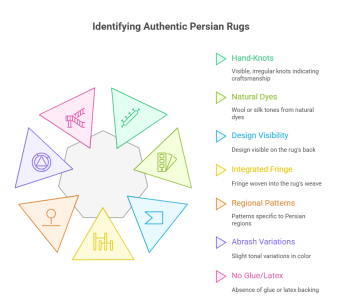
Conclusion: The Art of Choosing with Confidence
Every Persian rug carries a world of history and meaning. Understanding Persian rug authenticity helps you appreciate more than just their beauty. It connects you to a centuries-old tradition of craftsmanship and culture.
Notice the intricate weaves, the natural color variations, and the artisan’s skilled touch. This represents more than mere décor.You are collecting a story.
If that story inspires you, discover timeless designs inspired by authentic heritage in our Traditional Persian Rugs Collection. Are you drawn to serene and understated designs? Explore our Neutral Tones to bring subtle Persian grace into your space.
Allow your rug to serve as more than just a surface beneath your feet. Let it serve as a piece of living history, woven with care, culture, and character.
